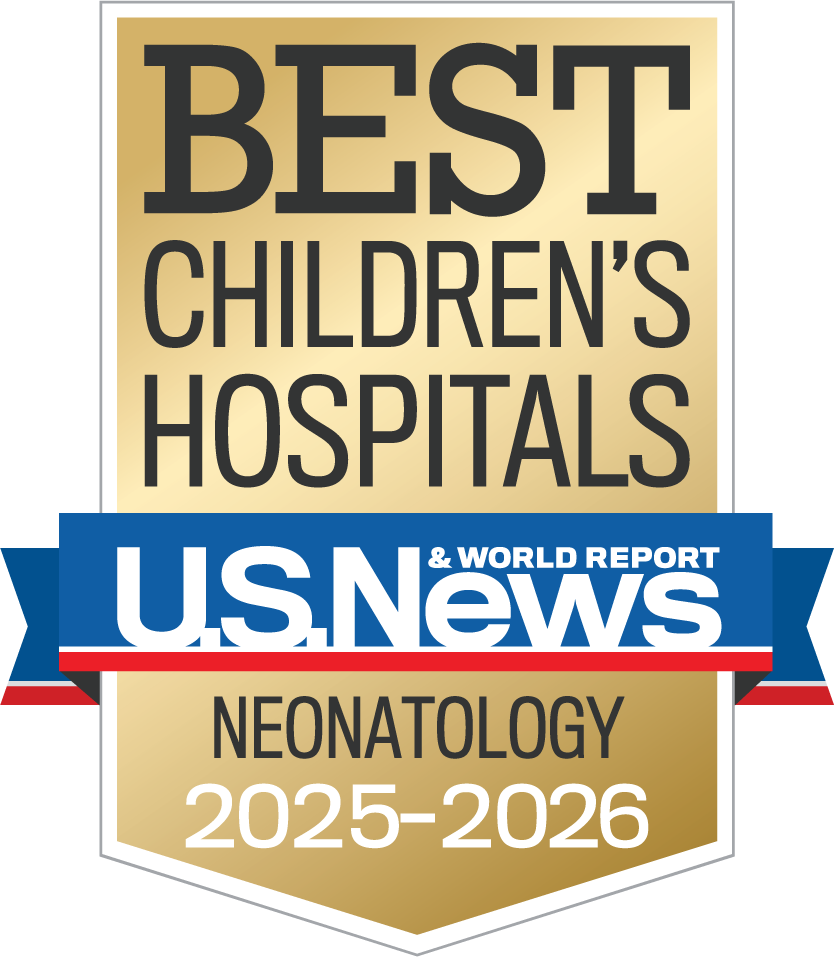When Annie Denslow began her recent talk on a healthy work environment for CHOC’s Grand Rounds, she first turned her attention to a sports stadium several thousand miles away in Cincinnati. That’s where earlier in the year, football player Damar Hamlin suffered a cardiac arrest and collapsed during a game.
Like millions of others, Denslow, a physician associate in CHOC’s Small Baby Unit, watched as medical professionals jumped into action and helped save Hamlin’s life.
The ordeal made Denslow think about the medical professionals who came to Hamlin’s aid. They were people like her and her colleagues – people who jump from one emergency to another day after day without taking time for a reset.
“The NFL received widespread praise for allowing the players to really focus on what happened and kind of heal themselves and focus on the recovery of the player,” she says. “For those of us in the medical field though … we were saying to ourselves, are we different? Are we tougher than these big professional athletes that we see were brought to tears?”
It was these kinds of questions that caused Denslow to delve deeper into the stresses of dealing with life-and-death situations. How do professionals move from one patient to the next so swiftly? Are they hardened from years on the job? Are they doing something right or something wrong? And how do the answers to these questions affect them over time, both professionally and personally?
And, most importantly, how do team members support each other while performing demanding jobs that can pack a hard emotional punch.
“How we navigate this is paramount to our happiness, our career satisfaction and job retention,” she says. “But this skill and many others are not universally taught in any formal medical, nursing or other education prior to entering the workforce.”
Experiencing trauma as a medical staff
Denslow used her experience in the neonatal intensive care unit as a springboard, but said her experience was applicable to others working in medicine. She talked about two people she called Doctor A, an excellent young doctor, and Patient C, a premature baby with serious health issues.
“Although not the youngest or the smallest preemie, they were one of the sickest from the beginning,” Denslow says.
Hospital staff bonded deeply with the baby and their family. Their two-month stay was during the height of the COVID-19 pandemic and only one parent could be with them at any time, so staff found themselves not only being healthcare providers, but also secondary family members, often helping a parent bathe and feed the baby and even holding their hand.
Baby C ultimately did not survive. Their family expressed love and gratitude to the hospital staff, but their death continued to haunt the team that cared for them.
“All of us struggled for months and years with the aftereffects of this episode,” Denslow says. “For all of us working in critical care or intensive care medicine, this story could be shared many times over in different units, in different venues with different families. They’re probably popping into your mind right now, but we’ve all experienced something very similar many times over.”
Promoting a healthy work environment for medical teams
Dealing with those kinds of experiences is what prompted Denslow to delve into ways to foster a healthy work environment – one that facilitates a sense of well-being. And the first order of business is to define exactly what well-being is.
“Well-being can be defined as a state of happiness and contentment with low levels of distress and very intact both physical and mental health,” Denslow says. “And there’s not many of us that can say that we operate at that level, right? We don’t have low levels of stress in what we do.”
Finding a state of well-being is different for everybody. But Denslow says it can be influenced by many factors, including health, emotions, spiritual leanings, social circles and socioeconomic status. Research has shown that if someone is not happy at work, it will seep into their lives away from the hospital.
Add to that the extra burden places on healthcare workers during the pandemic: longer hours, extra shifts and devastating outcomes, all while dealing with more stress at home. It all took a heavy toll. All areas of the industry reported increases in depression, stress, burnout and exhaustion.
“So it is paramount that we talk about and figure out how to make our work environment healthy,” she says.
Moral distress, burnout and compassion fatigue common for medical staff
Stress affects people differently and can show itself physically and emotionally through anger, insomnia, shame, sadness and substance abuse.
“Self-isolation is another thing we commonly do in the healthcare field where we feel nobody will understand what we’ve gone through,” she says. “We can really choose to self-isolate after a stressful episode, which is the worst thing to do, but very, very common.”
Denslow suggested healthcare professionals take online assessments to gauge their own levels of stress. And she identified three major threats to well-being: moral distress, burnout and compassion fatigue.
Moral distress is when one outside pressure makes it nearly impossible to follow what one knows to be the correct course of action. It might involve having too many patients to give each of them the care they should receive. Burnout is the emotional and physical exhaustion caused by workplace stress. And compassion fatigue comes from caring for people who are in significant pain or emotional distress.
To counter these feelings, Denslow said to focus on the positive aspects of the job and embrace the success, like watching a healthy baby leave the hospital after an arduous stay. Denslow called it “compassion satisfaction.”
“To be able to say, ‘I played a role in that family’s happiness,’” Denslow says.
But how does one achieve compassion satisfaction? It’s not always easy, but Denslow said there are two components to focus on: The team and the individual.
“You can’t fix the problem without both,” she says.
Standards for a positive work environment in healthcare settings
She cited research from the American Association of Critical-Care Nurses, which identified six standards for creating a healthy work environment – skilled communication, true collaboration, effective decision making, meaningful recognition, appropriate staffing and authentic leadership.
“What they found when they researched these tenets was that when you implement these standards effectively, you see improvement in all aspects of hospital care,” Denslow adds.
The outcomes can be dramatic. Staffing satisfaction and retention improves, and workers feel less distressed. And not only do heightened standards improve work conditions, but they can also have a positive impact on patient care. For example, Denslow noted that patients at hospitals with poor work environments were 16% less likely to survive an in-house cardiac arrest than those with healthy work environments.
And while nurses said that being well paid improves their chances of staying on the job, feeling respected by the hospital administration was nearly as important.
“These tenets are highly linked to a lot of the things that our units are struggling with,” Denslow says. “It’s important that we understand how to assess and then how to change them for the better.”
Returning to the online assessment, Denslow said these tests can show how healthy one’s work environment is. An assessment that she took showed areas that her department needed to improve. The test then offers information on ways to improve scores.
“There are many resources out there, but you have to look, you have to self-identify that there’s a problem and then start clicking,” she says. “All of us need to advocate that our unit and our practices invest time figuring out where we can do better and then create a plan to do better.”
Personal wellness, support from others and the buddy system needed in healthcare
Equally as important is working on personal wellness. People need to take the time to recognize things that don’t feel right. Denslow said staying connected with friends can be a powerful tool to staying healthy.
“We all have that work buddy, or maybe it’s someone across the country that you trained with, who really understands and knows what you’re going through and doesn’t mind a call at 10 p.m. when you’re driving home after that code, or you had a really rough day and you want to just chit chat about what’s happened,” she says. “We need these friends and it’s not just in that moment, but it actually makes your life and your personal satisfaction with your professional role greatly improved.”
People who have been on the job a long time have likely developed many friendships. That may not always be the case for younger workers, so Denslow suggested forming a buddy system to help each other get through rough patches.
She then suggested each person take an individual assessment of their own wellness needs, to write down what they feel and where they want to be. Then compare the lists and see what needs to change.
“Incorporate action in those areas that are part of your definition, whether it’s exercise, healthy, eating or sleeping,” she says. “Start small and keep that definition of well-being close to your heart.”
She said it’s important to practice self-care while at work. Stay hydrated, don’t skip lunch, take a minute or two to stretch after sitting for a long time. Even things as simple as expressing gratitude and starting the day by taking deep breaths can have a positive impact.
“You know, if you just take a few minutes throughout the day to make sure you’re taking care of yourself, you will be better off in this marathon that we call working in health care,” Denslow says.
Other ways to improve an outlook are meditation, spending a few minutes in a quiet place to decompress and supporting fellow workers.
“If you see someone struggling, even though you’re busy and overwhelmed yourself, check in with them,” Denslow says. “Sometimes just asking someone how they’re doing can change their entire perspective of that day or that stressful event because knowing somebody cares about you and knowing that it’s OK to say that this is hard can really help someone process those emotions, especially earlier in their journey.”
Or, she said, just perform a random act of kindness perhaps something as simple as getting someone a cup of coffee.
‘If you have availability to help, help because there will be days when you need kindness,” she says. “Show appreciation for your team.”

CHOC was named one of the nation’s best children’s hospitals for neonatology by U.S. News & World Report in its 2025-26 Best Children’s Hospitals rankings.




